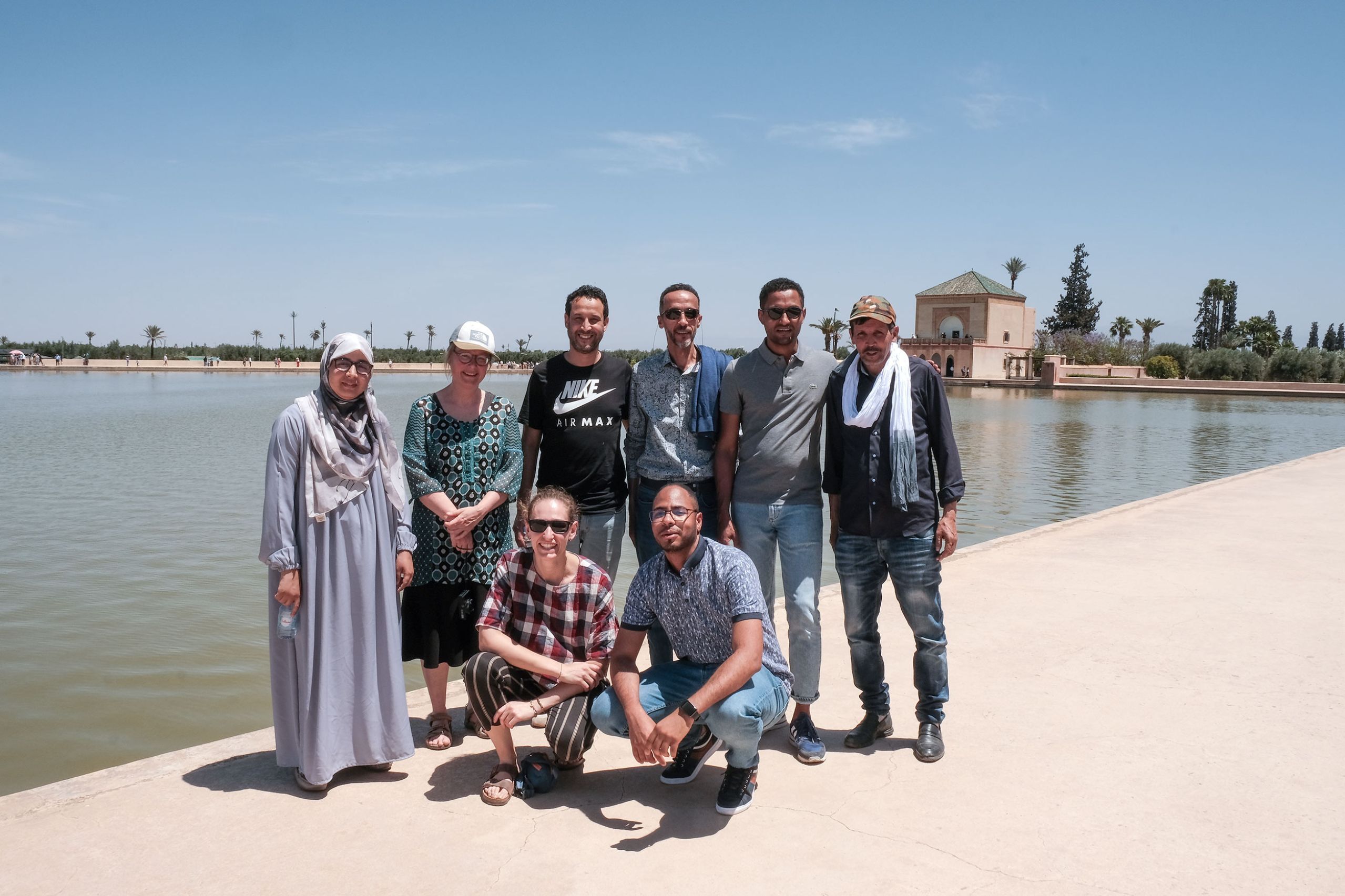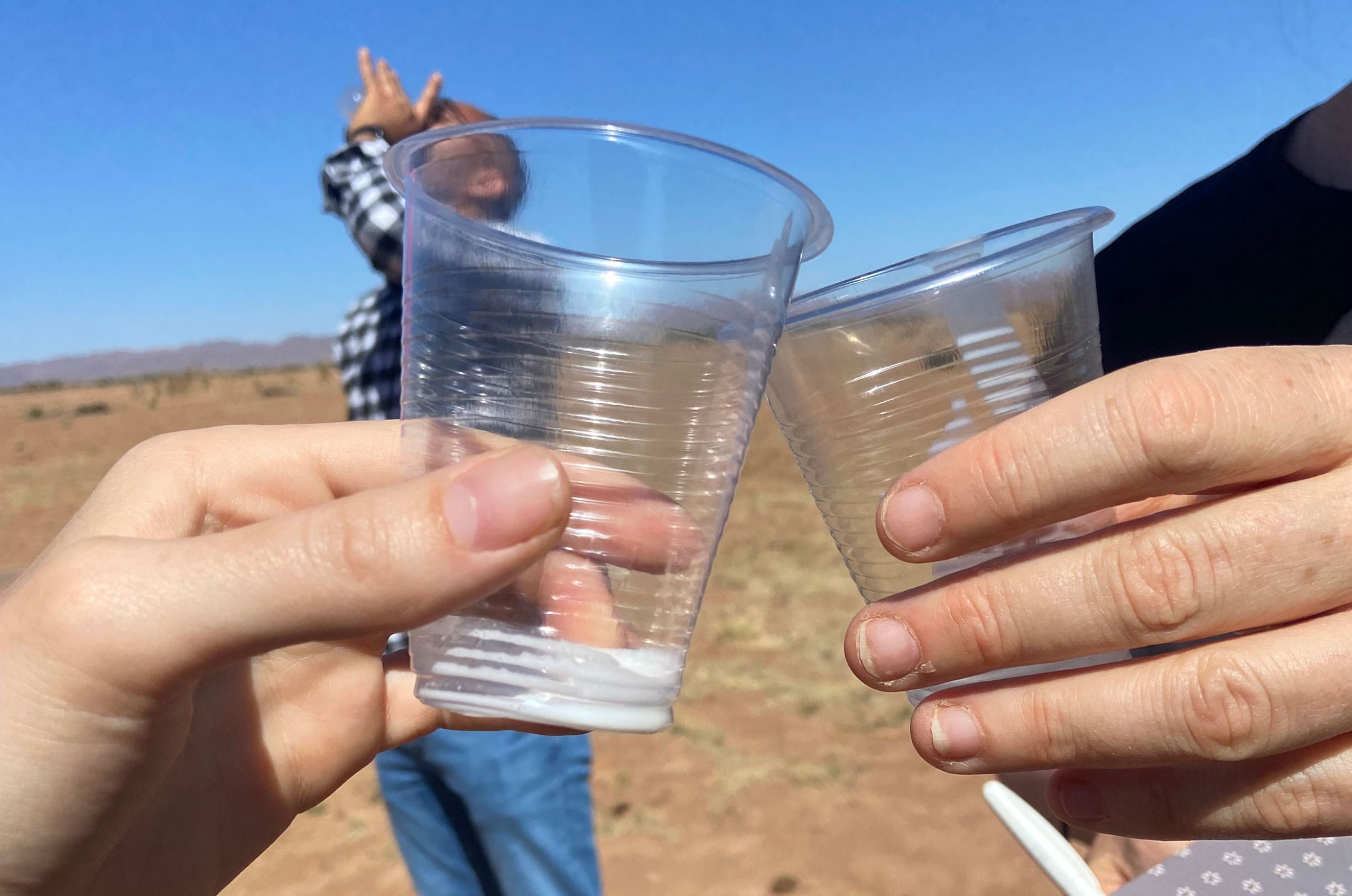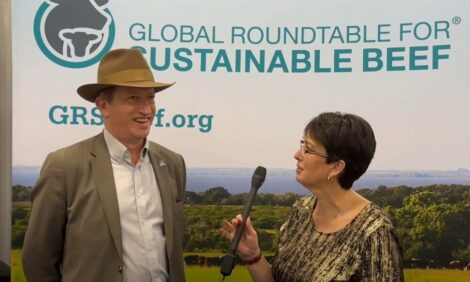



Camel-milk project in Morocco shows promise
Exploring the potential of camel milk and high-quality feedA collaborative research project has taken significant steps forward in exploring the potential of camel milk and high-quality feed. 2024 is the International Year of Camelids (IYC 2024), so the timing of the Camilk project, a joint initiative by HAFL Hugo P. Cecchini Institute (HPCI) and HAFL Food Sciences & Management (FSM) staff in conjunction with external partners, couldn’t be better.
Led by Pascale Waelti (HPCI) with Guillaume Egli, lecturer in Food Business (FSM), and Sarah Guidi, an FSM research assistant, Camilk aims to enhance the value of camel milk through improved feeding methods with by-products and the development of innovative dairy products.
The trio has just returned from a research trip to Morocco, funded by a Leading House MENA Research Partnership Grant. During the week-long visit, they met with partners: professors and students from the Polydisciplinary Faculty of Taroudant at the Ibn Zohr University, camel owners, farmers and potential camel-milk consumers.

The group spent time in Taroudant, Agadir, and Marrakesh, but the heart of their research lay in Zagora, where camel owners are concentrated.
“My personal goals were to discover Morocco, as I haven’t been there before, and get to know our partners at the Polydisciplinary Faculty,” says Guillaume. “As far as the project was concerned, I was looking forward to gaining a better understanding of the Moroccan dairy market and conducting focus groups with consumers to understand their consumption habits.”
Sarah echoed similar sentiments. “As it was only a preliminary study to see if the project has a future, I really hoped the results would be positive so the project can continue and go toward the concrete development of something. This really happened! Every person we spoke with was very positive to our idea, which is very motivating. Plus, the collaboration between the Ibn Zohr University and HAFL teams was really great.”

Not only was interest from the Moroccan contingent high, but the findings were also promising.
“The fact that Moroccan consumers are interested in camel-milk-based products was a significant revelation,” said Guillaume. “However, we also became aware of the difficulties associated with feeding livestock and the fact that the value chain is not yet well structured. This presents us with some exciting challenges.”
Sarah added, “Every camel producer mentioned the lack of feed due to the drought, so we really think there is potential in developing a feed based on agricultural by-products. Regarding the milk transformation possibilities, there is a clear demand for this milk and consumers seemed very open to try new camel-milk products. But milk production is still very limited.”
The farmers and milk producers they interacted with were enthusiastic about the project’s potential to improve camel livelihood and farmer incomes. “Most of the farmers have a lot of waste from their agriculture productions,” said Sarah. “They would be interested if they could earn a little something from that waste. The camel owners are really suffering from the lack of natural feed and must buy supplementary food. They would be very interested in nutritious and healthy feed for their camels. They would also be interested to sell their milk to a cooperative, but as most of them currently don’t produce enough milk, due to the lack of feed, they cannot really picture a large-scale milk production facility yet.”
“Some of the young producers showed real interest,” Guillaume added, “as they had a real entrepreneurial vision to make this traditional activity sustainable in today's world.”
When it comes to the development of dairy products, the team is still considering options.
“The focus groups revealed some very promising leads,” said Guillaume, “such as leben (fermented milk) and jben (fresh cheese), but the final choice of product(s) to be developed will be made after we analyse the collected data.”
What’s next for the Camilk project?
“Data analysis, expert interviews, and publication of results,” said Guillaume. Sarah also mentioned the need to find financial backing for a following project.
“This would focus on a nutritious and inexpensive camel feed based on the agricultural side streams – more precisely argan pressed cake (mixed with tomato, banana, and watermelon agricultural waste) – and see its effect on milk production, plus the development of new dairy products.”
As the project continues to unfold, its potential to contribute to sustainable agriculture and economic development in Morocco and beyond is exciting. With consumer interest, farmer engagement and collaborative efforts, the journey of camel milk from the deserts of Morocco to the global market seems promising.


